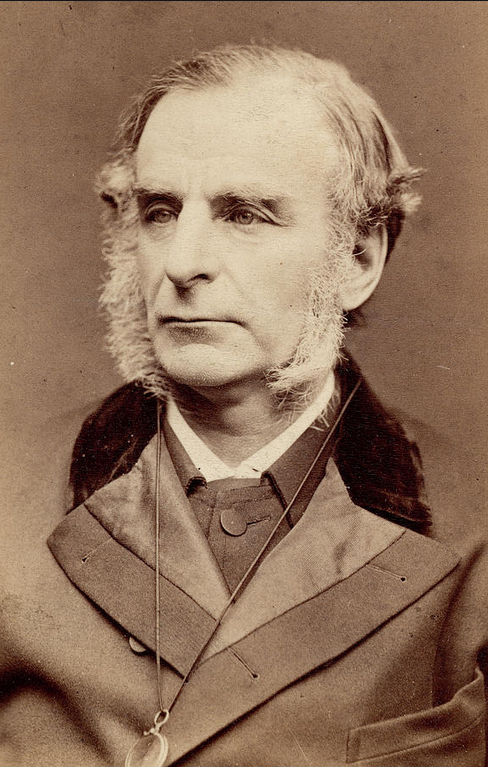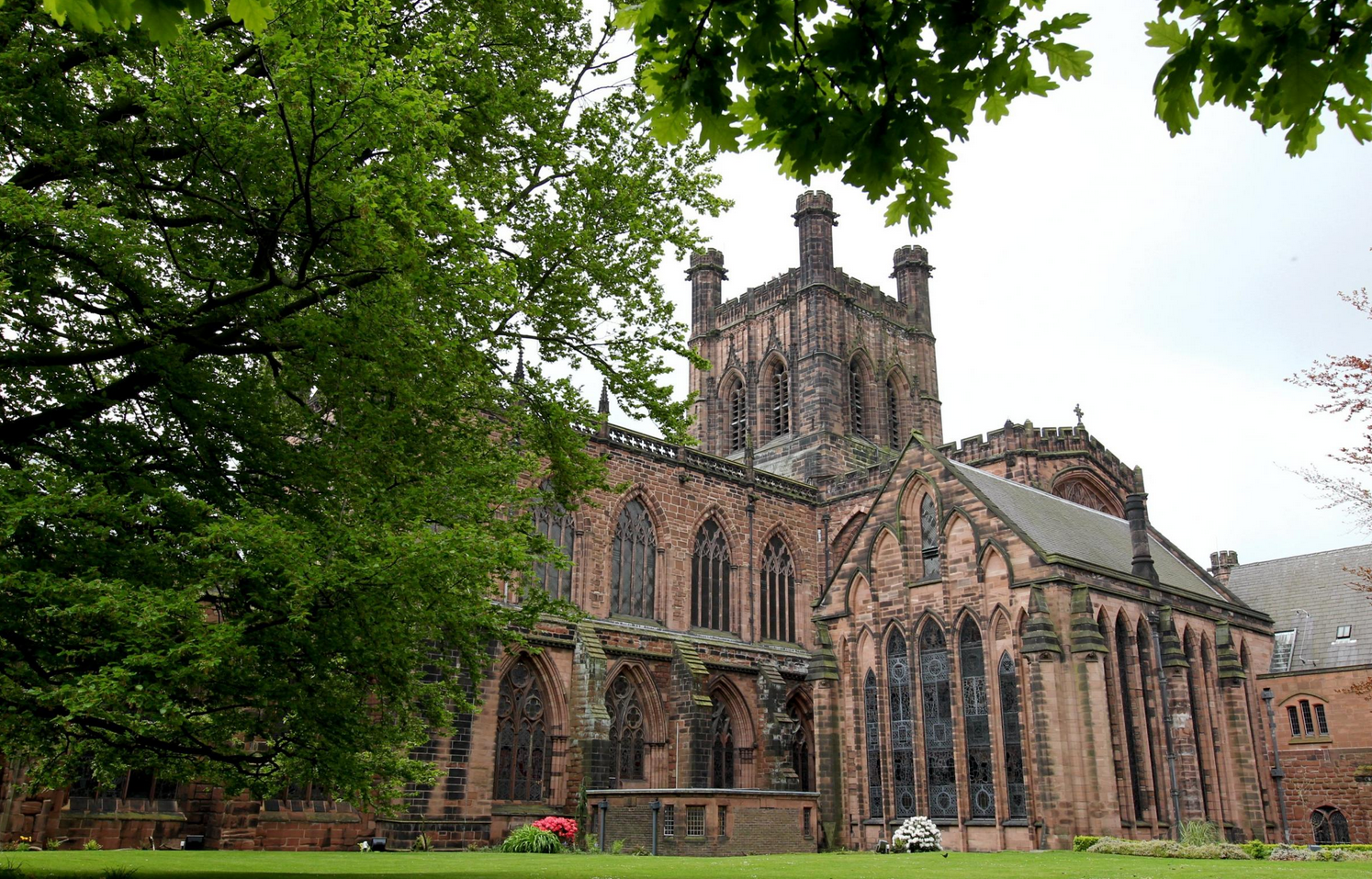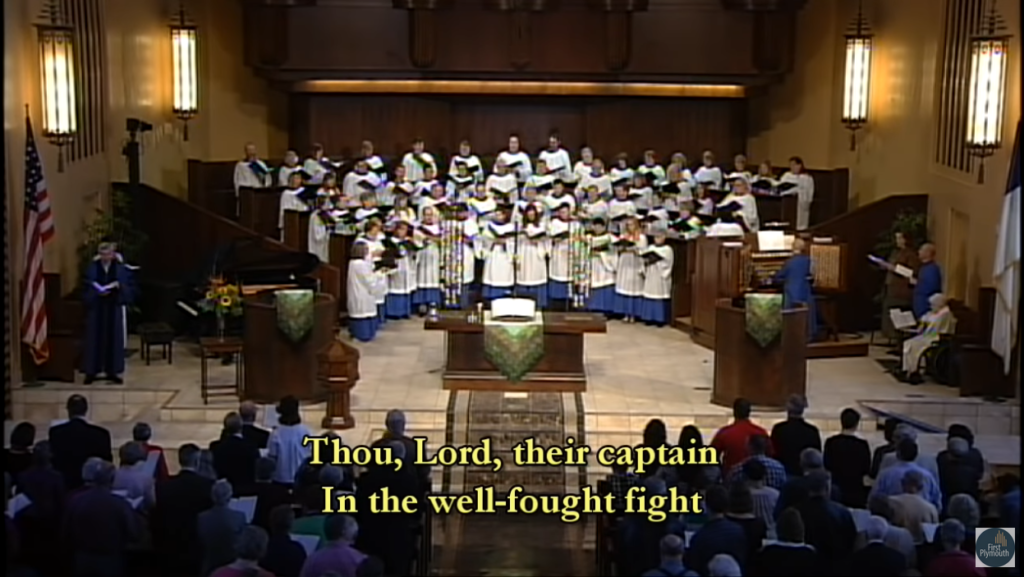Editor’s note: The following is extracted from Literary and General Lectures and Essays, by Charles Kingsley (published 1898).
This lecture is intended to be suggestive rather than didactic; to set you thinking and inquiring for yourselves, rather than learning at second-hand from me. Some among my audience, I doubt not, will neither need to be taught by me, nor to be stirred up to inquiry for themselves. They are already, probably, antiquarians; already better acquainted with the subject than I am. But they will, I hope, remember that I am only trying to excite a general interest in that very architecture in which they delight, and so to make the public do justice to their labours. They will therefore, I trust—
Be to my faults a little blind,
Be to my virtues very kind—
and if my architectural theories do not seem to them correct in all details—well-founded I believe them myself to be—remember that if it be a light matter to me, or to the audience, whether any special and pet fancy of mine should be exactly true or not; yet it is not a light matter that my hearers should be awakened—and too many just now need an actual awakening—to a right, pure, and wholesome judgment on questions of art, especially when the soundness of that judgment depends, as in this case, on sound judgments about human history, as well as about natural objects.
Now, it befell me that, fresh from the tropic forests, and with their forms hanging always as it were in the background of my eye, I was impressed more and more vividly the longer I looked, with the likeness of those forest forms to the forms of our own Cathedral of Chester. The grand and graceful Chapter-house transformed itself into one of those green bowers, which, once seen, and never to be seen again, make one at once richer and poorer for the rest of life. The fans of groining sprang from the short columns, just as do the feathered boughs of the far more beautiful Maximiliana palm, and just of the same size and shape; and met overhead, as I have seen them meet, in aisles longer by far than our cathedral nave. The free upright shafts, which give such strength, and yet such lightness, to the mullions of each window, pierced upward through those curving lines, as do the stems of young trees through the fronds of palm; and, like them, carried the eye and the fancy up into the infinite, and took off a sense of oppression and captivity which the weight of the roof might have produced. In the nave, in the choir, the same vision of the tropic forest haunted me. The fluted columns not only resembled, but seemed copied from the fluted stems beneath which I had ridden in the primeval woods; their bases, their capitals, seemed copied from the bulgings at the collar of the root, and at the spring of the boughs, produced by a check of the redundant sap; and were garlanded often enough, like the capitals of the columns, with delicate tracery of parasite leaves and flowers; the mouldings of the arches seemed copied from the parallel bundles of the curving bamboo shoots; and even the flatter roof of the nave and transepts had its antitype in that highest level of the forest aisles where the trees, having climbed at last to the light-food which they seek, care no longer to grow upward, but spread out in huge limbs, almost horizontal, reminding the eye of the four-centred arch which marks the period of perpendicular Gothic.
Nay, to this day there is one point in our cathedral which, to me, keeps up the illusion still. As I enter the choir, and look upward toward the left, I cannot help seeing, in the tabernacle work of the stalls, the slender and aspiring forms of the “rastrajo;” the delicate second growth which, as it were, rushes upward from the earth wherever the forest is cleared; and above it, in the tall lines of the north-west pier of the tower—even though defaced, along the inner face of the western arch, by ugly and needless perpendicular panelling—I seem to see the stems of huge cedars, or balatas, or ceibas, curving over, as they would do, into the great beams of the transept roof, some seventy feet above the ground.
Nay, so far will the fancy lead, that I have seemed to see, in the stained glass between the tracery of the windows, such gorgeous sheets of colour as sometimes flash on the eye, when, far aloft, between high stems and boughs, you catch sight of some great tree ablaze with flowers, either its own or those of a parasite; yellow or crimson, white or purple; and over them again the cloudless blue.
Now, I know well that all these dreams are dreams; that the men who built our northern cathedrals never saw these forest forms; and that the likeness of their work to those of tropic nature is at most only a corroboration of Mr. Ruskin’s dictum, that “the Gothic did not arise out of, but developed itself into, a resemblance to vegetation . . . It was no chance suggestion of the form of an arch from the bending of a bough, but the gradual and continual discovery of a beauty in natural forms which could be more and more transferred into those of stone, which influenced at once the hearts of the people and the form of the edifice.” So true is this, that by a pure and noble copying of the vegetable beauty which they had seen in their own clime, the medieval craftsmen went so far—as I have shown you—as to anticipate forms of vegetable beauty peculiar to tropic climes, which they had not seen; a fresh proof, if proof were needed, that beauty is something absolute and independent of man; and not, as some think, only relative, and what happens to be pleasant to the eye of this man or that.
But thinking over this matter, and reading over, too, that which Mr. Ruskin has written thereon in his “Stones of Venice,” vol. ii. cap. vi., on the nature of Gothic, I came to certain further conclusions—or at least surmises—which I put before you to-night, in hopes that if they have no other effect on you, they will at least stir some of you up to read Mr. Ruskin’s works.
Now Mr. Ruskin says: “That the original conception of Gothic architecture has been derived from vegetation, from the symmetry of avenues and the interlacing of branches, is a strange and vain supposition. It is a theory which never could have existed for a moment in the mind of any person acquainted with early Gothic; but, however idle as a theory, it is most valuable as a testimony to the character of the perfected style.”
Doubtless so. But you must remember always that the subject of my lecture is Grots and Groves; that I am speaking not of Gothic architecture in general, but of Gothic ecclesiastical architecture; and more, almost exclusively of the ecclesiastical architecture of the Teutonic or northern nations; because in them, as I think, the resemblance between the temple and the forest reached the fullest exactness.
Now the original idea of a Christian church was that of a grot—a cave. That is a historic fact. The Christianity which was passed on to us began to worship, hidden and persecuted, in the catacombs of Rome, it may be often around the martyrs’ tombs, by the dim light of candle or of torch. The candles on the Roman altars, whatever they have been made to symbolise since then, are the hereditary memorials of that fact. Throughout the North, in these isles as much as in any land, the idea of the grot was, in like wise, the idea of a church. The saint or hermit built himself a cell; dark, massive, intended to exclude light as well as weather; or took refuge in a cave. There he prayed and worshipped, and gathered others to pray and worship round him, during his life. There he, often enough, became an object of worship in his turn, after his death. In after ages his cave was ornamented, like that of the hermit of Montmajour by Arles; or his cell-chapel enlarged, as those of the Scotch and Irish saints have been, again and again; till at last a stately minster rose above it. Still, the idea that the church was to be a grot haunted the minds of builders.
But side by side with the Christian grot there was throughout the North another form of temple, dedicated to very different gods, namely, the trees from whose mighty stems hung the heads of the victims of Odin or of Thor—the horse, the goat, and, in time of calamity or pestilence, of men. Trees and not grots were the temples of our forefathers.
Scholars know well—but they must excuse my quoting it for the sake of those who are not scholars—the famous passage of Tacitus which tells how our forefathers “held it beneath the dignity of the gods to coop them within walls, or liken them to any human countenance; but consecrated groves and woods, and called by the name of gods that mystery which they held by faith alone;” and the equally famous passage of Claudian, about “the vast silence of the Black Forest, and groves awful with ancient superstition; and oaks, barbarian deities;” and Lucan’s “groves inviolate from all antiquity, and altars stained with human blood.”
To worship in such spots was an abomination to the early Christian. It was as much a test of heathendom as the eating of horse-flesh, sacred to Odin, and therefore unclean to Christian men. The Lombard laws and others forbid expressly the lingering remnants of grove worship. St. Boniface and other early missionaries hewed down in defiance the sacred oaks, and paid sometimes for their valour with their lives.
It is no wonder, then, if long centuries elapsed ere the likeness of vegetable forms began to reappear in the Christian churches of the North. And yet both grot and grove were equally the natural temples which the religious instinct of all deep-hearted peoples, conscious of sin, and conscious, too, of yearnings after a perfection not to be found on earth, chooses from the earliest stage of awakening civilisation. In them, alone, before he had strength and skill to build nobly for himself, could man find darkness, the mother of mystery and awe, in which he is reminded perforce of his own ignorance and weakness; in which he learns first to remember unseen powers, sometimes to his comfort and elevation, sometimes only to his terror and debasement; darkness; and with it silence and solitude, in which he can collect himself, and shut out the noise and glare, the meanness and the coarseness of the world; and be alone awhile with his own thoughts, his own fancy, his own conscience, his own soul.
But for awhile, as I have said, that darkness, solitude, and silence were to be sought in the grot, not in the grove.
Then Christianity conquered the Empire. It adapted, not merely its architecture, but its very buildings, to its worship. The Roman Basilica became the Christian church; a noble form of building enough, though one in which was neither darkness, solitude, nor silence, but crowded congregations, clapping—or otherwise—the popular preacher; or fighting about the election of a bishop or a pope, till the holy place ran with Christian blood. The deep-hearted Northern turned away, in weariness and disgust, from those vast halls, fitted only for the feverish superstition of a profligate and worn-out civilisation; and took himself, amid his own rocks and forests, moors and shores, to a simpler and sterner architecture, which should express a creed, sterner, and at heart far simpler, though dogmatically the same.
And this is, to my mind, the difference, and the noble difference, between the so-called Norman architecture, which came hither about the time of the Conquest; and that of Romanised Italy.
But the Normans were a conquering race; and one which conquered, be it always remembered, in England at least, in the name and by the authority of Rome. Their ecclesiastics, like the ecclesiastics on the Continent, were the representatives of Roman civilisation, of Rome’s right, intellectual and spiritual, to rule the world.
Therefore their architecture, like their creed, was Roman. They took the massive towering Roman forms, which expressed domination; and piled them one on the other, to express the domination of Christian Rome over the souls, as they had represented the domination of heathen Rome over the bodies of men. And so side by side with the towers of the Norman keep rose the towers of the Norman cathedral—the two signs of a double servitude.
But with the thirteenth century there dawned an age in Northern Europe which I may boldly call an heroic age—heroic in its virtues and in its crimes; an age of rich passionate youth, or rather of early manhood; full of aspirations of chivalry, of self-sacrifice as strange and terrible as it was beautiful and noble, even when most misguided. The Teutonic nations of Europe—our own forefathers most of all—having absorbed all that heathen Rome could teach them, at least for the time being, began to think for themselves; to have poets, philosophers, historians, architects, of their own. The thirteenth century was especially an age of aspiration; and its architects expressed, in building, quite unlike those of the preceding centuries, the aspirations of the time.
The Pointed Arch had been introduced half a century before. It may be that the Crusaders saw it in the East and brought it home. It may be that it originated from the quadripartite vaulting of the Normans, the segmental groins of which, crossing diagonally, produced to appearance the pointed arch. It may be that it was derived from that mystical figure of a pointed oval form, the vesica piscis. It may be, lastly, that it was suggested simply by the intersection of semicircular arches, so frequently found in ornamental arcades. The last cause may perhaps be the true one; but it matters little whence the pointed arch came. It matters much what it meant to those who introduced it. And at the beginning of the Transition or semi-Norman period, it seems to have meant nothing. It was not till the thirteenth century that it had gradually received, as it were, a soul, and had become the exponent of a great idea. As the Norman architecture and its forms had signified domination, so the Early English, as we call it, signified aspiration—an idea which was perfected, as far as it could be, in what we call the Decorated style.
There is an evident gap, I had almost said a gulf, between the architectural mind of the eleventh and that of the thirteenth century. A vertical tendency, a longing after lightness and freedom appears; and with them a longing to reproduce the graces of nature and art. And here I ask you to look for yourselves at the buildings of this new era—there is a beautiful specimen in yonder arcade—and judge for yourselves whether they, and even more than they the Decorated style into which they developed, do not remind you of the forest shapes?
And if they remind you, must they not have reminded those who shaped them? Can it have been otherwise? We know that the men who built were earnest. The carefulness, the reverence, of their work have given a subject for some of Mr. Ruskin’s noblest chapters, a text for some of his noblest sermons. We know that they were students of vegetable form. That is proved by the flowers, the leaves, even the birds, with which they enwreathed their capitals and enriched their mouldings. Look up there, and see.
You cannot look at any good church-work from the thirteenth to the middle of the fifteenth century, with out seeing that leaves and flowers were perpetually in the workman’s mind. Do you fancy that stems and boughs were never in his mind? He kept, doubtless, in remembrance the fundamental idea, that the Christian church should symbolise a grot or cave. He could do no less; while he again and again saw hermits around him dwelling and worshipping in caves, as they had done ages before in Egypt and Syria; while he fixed, again and again, the site of his convent and his minster in some secluded valley guarded by cliffs and rocks, like Vale Crucis in North Wales. But his minster stood often not among rocks only, but amid trees; in some clearing in the primeval forest, as Vale Crucis was then. At least he could not pass from minster to minster, from town to town, without journeying through long miles of forest. Do you think that the awful shapes and shadows of that forest never haunted his imagination as he built? He would have cut down ruthlessly, as his predecessors the early missionaries did, the sacred trees amid which Thor and Odin had been worshipped by the heathen Saxons; amid which still darker deities were still worshipped by the heathen tribes of Eastern Europe. But he was the descendant of men who had worshipped in those groves, and the glamour of them was upon him still. He peopled the wild forest with demons and fairies; but that did not surely prevent his feeling its ennobling grandeur, its chastening loneliness. His ancestors had held the oaks for trees of God, even as the Jews held the cedar, and the Hindoos likewise; for the Deodara pine is not only, botanists tell us, the same as the cedar of Lebanon, but its very name—the Deodara—signifies naught else but “the tree of God.”
His ancestors, I say, had held the oaks for trees of God. It may be that as the monk sat beneath their shade with his bible on his knee, like good St. Boniface in the Fulda forest, he found that his ancestors were right.
To understand what sort of trees they were from which he got his inspiration, you must look, not at an average English wood, perpetually thinned out as the trees arrive at middle age. Still less must you look at the pines, oaks, beeches, of an English park, where each tree has had space to develop itself freely into a more or less rounded form. You must not even look at the tropic forests. For there, from the immense diversity of forms, twenty varieties of tree will grow beneath each other, forming a close-packed heap of boughs and leaves, from the ground to a hundred feet and more aloft.
You should look at the North American forests of social trees—especially of pines and firs, where trees of one species, crowded together, and competing with equal advantages for the air and light, form themselves into one wilderness of straight smooth shafts, surmounted by a flat sheet of foliage, held up by boughs like the ribs of a groined roof, while underneath the ground is bare as a cathedral floor.
You all know, surely, the Hemlock spruce of America; which, while growing by itself in open ground, is the most wilful and fantastic, as well as the most graceful, of all the firs; imitating the shape, not of its kindred, but of an enormous tuft of fern.
Yet if you look at the same tree, when it has struggled long for life from its youth amid other trees of its own kind and its own age, you find that the lower boughs have died off from want of light, leaving not a scar behind. The upper boughs have reached at once the light and their natural term of years. They are content to live, and little more. The central trunk no longer sends up each year a fresh perpendicular shoot to aspire above the rest, but, as weary of struggling ambition as they are, is content to become more and more their equal as the years pass by. And this is a law of social forest trees, which you must bear in mind whenever I speak of the influence of tree-forms on Gothic architecture.
Such forms as these are rare enough in Europe now.
I never understood how possible, how common they must have been in medieval Europe, till I saw in the forest of Fontainebleau a few oaks, like the oak of Charlemagne and the Bouquet du Roi, at whose age I dare not guess, but whose size and shape showed them to have once formed part of a continuous wood, the like whereof remains not in these isles—perhaps not east of the Carpathian mountains. In them a clear shaft of at least sixty, it may be eighty feet, carries a flat head of boughs, each in itself a tree. In such a grove, I thought, the heathen Gaul, even the heathen Frank, worshipped beneath “trees of God.” Such trees, I thought, centuries after, inspired the genius of every builder of Gothic aisles and roofs.
Thus, at least, we can explain that rigidity, which Mr. Ruskin tells us, “is a special element of Gothic architecture. Greek and Egyptian buildings,” he says—and I should have added, Roman building also, in proportion to their age, i.e. to the amount of the Roman elements in them—“stand for the most part by their own weight and mass, one stone passively incumbent on another: but in the Gothic vaults and traceries there is a stiffness analogous to that of the bones of a limb, or fibres of a tree; an elastic tension and communication of force from part to part; and also a studious expression of this throughout every part of the building.” In a word, Gothic vaulting and tracery have been studiously made like to boughs of trees. Were those boughs present to the mind of the architect? Or is the coincidence merely fortuitous? You know already how I should answer. The cusped arch, too, was it actually not intended to imitate vegetation? Mr. Ruskin seems to think so. He says that it is merely the special application to the arch of the great ornamental system of foliation, which, “whether simple as in the cusped arch, or complicated as in tracery, arose out of the love of leafage. Not that the form of the arch is intended to imitate a leaf, “but to be invested with the same characters of beauty which the designer had discovered in the leaf.” Now I differ from Mr. Ruskin with extreme hesitation. I agree that the cusped arch is not meant to imitate a leaf. I think with Mr. Ruskin, that it was probably first adopted on account of its superior strength; and that it afterwards took the form of a bough. But I cannot as yet believe that it was not at last intended to imitate a bough; a bough of a very common form, and one in which “active rigidity” is peculiarly shown. I mean a bough which has forked. If the lower fork has died off, for want of light, we obtain something like the simply cusped arch. If it be still living—but short and stunted in comparison with the higher fork—we obtain, it seems to me, something like the foliated cusp; both likenesses being near enough to those of common objects to make it possible that those objects may have suggested them. And thus, more and more boldly, the medieval architect learnt to copy boughs, stems, and at last, the whole effect, as far always as stone would allow, of a combination of rock and tree, of grot and grove.
So he formed his minsters, as I believe, upon the model of those leafy minsters in which he walked to meditate, amid the aisles which God, not man, has built. He sent their columns aloft like the boles of ancient trees. He wreathed their capitals, sometimes their very shafts, with flowers and creeping shoots. He threw their arches out, and interwove the groinings of their vaults, like the bough-roofage overhead. He decked with foliage and fruit the bosses above and the corbels below. He sent up out of those corbels upright shafts along the walls, in the likeness of the trees which sprang out of the rocks above his head. He raised those walls into great cliffs. He pierced them with the arches of the triforium, as with hermits’ cells. He represented in the horizontal sills of his windows, and in his horizontal string-courses, the horizontal strata of the rocks. He opened the windows into high and lofty glades, broken, as in the forest, by the tracery of stems and boughs, through which was seen, not merely the outer, but the upper world. For he craved, as all true artists crave, for light and colour; and had the sky above been one perpetual blue, he might have been content with it, and left his glass transparent. But in that dark, dank, northern clime, rain and snowstorm, black cloud and gray mist, were all that he was like to see outside for nine months in the year. So he took such light and colour as nature gave in her few gayer moods; and set aloft his stained-glass windows, the hues of the noonday and the rainbow, and the sunrise and the sunset, and the purple of the heather, and the gold of the gorse, and the azure of the bugloss, and the crimson of the poppy; and among them, in gorgeous robes, the angels and the saints of heaven, and the memories of heroic virtues and heroic sufferings, that he might lift up his own eyes and heart for ever out of the dark, dank, sad world of the cold north, with all its coarsenesses and its crimes, toward a realm of perpetual holiness, amid a perpetual summer of beauty and of light; as one who—for he was true to nature, even in that—from between the black jaws of a narrow glen, or from beneath the black shade of gnarled trees, catches a glimpse of far lands gay with gardens and cottages, and purple mountain ranges, and the far-off sea, and the hazy horizon melting into the hazy sky; and finds his heart carried out into an infinite at once of freedom and of repose.
And so out of the cliffs and the forests he shaped the inside of his church. And how did he shape the outside? Look for yourselves, and judge. But look, not at Chester, but at Salisbury. Look at those churches which carry not mere towers, but spires, or at least pinnacled towers approaching the pyramidal form. The outside form of every Gothic cathedral must be considered imperfect if it does not culminate in something pyramidal.
The especial want of all Greek and Roman buildings with which we are acquainted is the absence—save in a few and unimportant cases—of the pyramidal form. The Egyptians knew at least the worth of the obelisk; but the Greeks and Romans hardly knew even that: their buildings are flat-topped. Their builders were contented with the earth as it was. There was a great truth involved in that; which I am the last to deny.
But religions which, like the Buddhist or the Christian, nurse a noble self-discontent, are sure to adopt sooner or later an upward and aspiring form of building. It is not merely that, fancying heaven to be above earth, they point towards heaven. There is a deeper natural language in the pyramidal form of a growing tree. It symbolises growth, or the desire of growth. The Norman tower does nothing of the kind. It does not aspire to grow. Look—I mention an instance with which I am most familiar—at the Norman tower of Bury St. Edmund’s. It is graceful—awful, if you will—but there is no aspiration in it. It is stately, but self-content. Its horizontal courses, circular arches, above all, its flat sky-line, seem to have risen enough, and wish to rise no higher. For it has no touch of that unrest of soul which is expressed by the spire, and still more by the compound spire, with its pinnacles, crockets, finials—which are finials only in name; for they do not finish, and are really terminal buds, as it were, longing to open and grow upward, even as the crockets are bracts and leaves thrown off as the shoot has grown.
You feel, surely, the truth of these last words. You cannot look at the canopy work or the pinnacle work of this cathedral without seeing that they do not merely suggest buds and leaves, but that the buds and leaves are there carven before your eyes. I myself cannot look at the tabernacle work of our stalls without being reminded of the young pine forests which clothe the Hampshire moors. But if the details are copied from vegetable forms, why not the whole? Is not a spire like a growing tree, a tabernacle like a fir-tree, a compound spire like a group of firs? And if we can see that, do you fancy that the man who planned the spire did not see it as clearly as we do; and perhaps more clearly still?
I am aware, of course, that Norman architecture had sometimes its pinnacle, a mere conical or polygonal capping. I am aware that this form, only more and more slender, lasted on in England during the thirteenth and the early part of the fourteenth century; and on the Continent under many modifications, one English kind whereof is usually called a “broach,” of which you have a beautiful specimen in the new church at Hoole.
Now, no one will deny that that broach is beautiful. But it would be difficult to prove that its form was taken from a North European tree. The cypress was unknown, probably, to our northern architects. The Lombardy poplar—which has wandered hither, I know not when, all the way from Cashmere—had not wandered then, I believe, farther than North Italy. The form is rather that of mere stone; of the obelisk or of the mountain-peak; and they, in fact, may have at first suggested the spire. The grandeur of an isolated mountain, even of a dolmen or single upright stone, is evident to all.
But it is the grandeur not of aspiration, but of defiance; not of the Christian, not even of the Stoic, but rather of the Epicurean. It says—I cannot rise. I do not care to rise. I will be contentedly and valiantly that which I am; and face circumstances, though I cannot conquer them. But it is defiance under defeat. The mountain-peak does not grow, but only decays. Fretted by rains, peeled by frost, splintered by lightning, it must down at last; and crumble into earth, were it as old, as hard, as lofty as the Matterhorn itself. And while it stands, it wants not only aspiration, it wants tenderness; it wants humility; it wants the unrest which tenderness and humility must breed, and which Mr. Ruskin so clearly recognises in the best Gothic art. And, meanwhile, it wants naturalness. The mere smooth spire or broach—I had almost said, even the spire of Salisbury—is like no tall or commanding object in nature. It is merely the caricature of one—it may be of the mountain-peak. The outline must be broken, must be softened, before it can express the soul of a creed which in the thirteenth and fourteenth centuries, far more than now, was one of penitence as well as of aspiration, of passionate emotion as well as of lofty faith. But a shape which will express that soul must be sought, not among mineral, but among vegetable, forms. And remember always, if we feel thus even now, how much more must those medieval men of genius have felt thus, whose work we now dare only copy line by line?
So—as it seems to me—they sought among vegetable forms for what they needed: and they found it at once in the pine, or rather the fir—the spruce and silver firs of their own forests. They are not, of course, indigenous to England. But they are so common through all the rest of Europe, that not only would the form suggest itself to a continental architect, but to any English clerk who travelled, as all did who could, across the Alps to Rome. The fir-tree, not growing on level ground, like the oaks of Fontainebleau, into one flat roof of foliage, but clinging to the hillside and the crag, old above young, spire above spire, whorl above whorl—for the young shoots of each whorl of boughs point upward in the spring; and now and then a whole bough breaking away, as it were, into free space, turns upward altogether, and forms a secondary spire on the same tree—this surely was the form which the medieval architect seized, to clothe with it the sides and roof of the stone mountain which he had built; piling up pinnacles and spires, each crocketed at the angles; that, like a group of firs upon an isolated rock, every point of the building might seem in act to grow toward heaven, till his idea culminated in that glorious Minster of Cologne, which, if it ever be completed, will be the likeness of one forest-clothed group of cliffs, surrounded by three enormous pines.
One feature of the Norman temple he could keep; for it was copied from the same Nature which he was trying to copy—namely, the high-pitched roof and gables. Mr. Ruskin lays it down as a law, that the acute angle in roofs, gables, spires, is the distinguishing mark of northern Gothic. It was adopted, most probably, at first from domestic buildings. A northern house or barn must have a high-pitched roof, or the snow will not slip off it. But that fact was not discovered by man; it was copied by him from the rocks around. He saw the mountain-peak jut black and bare above the snows of winter; he saw those snows slip down in sheets, rush down in torrents under the sun, from the steep slabs of rock which coped the hillside; and he copied, in his roofs, the rocks above his town. But as the love for decorations arose, he would deck his roofs as nature had decked hers, till the gray sheets of the cathedral slates should stand out amid pinnacles and turrets rich with foliage, as the gray mountain-sides stood out amid knolls of feathery birch and towering pine.
He failed, though he failed nobly. He never succeeded in attaining a perfectly natural style.
The medieval architects were crippled to the last by the tradition of artificial Roman forms. They began improving them into naturalness, without any clear notion of what they wanted; and when that notion became clear, it was too late. Take, as an instance, the tracery of their windows. It is true, as Mr. Ruskin says, that they began by piercing holes in a wall of the form of a leaf, which developed, in the rose window, into the form of a star inside, and of a flower outside. Look at such aloft there. Then, by introducing mullions and traceries into the lower part of the window, they added stem and bough forms to those flower forms. But the two did not fit. Look at the west window of our choir, and you will see what I mean. The upright mullions break off into bough curves graceful enough: but these are cut short—as I hold, spoiled—by circular and triangular forms of rose and trefoil resting on them as such forms never rest in nature; and the whole, though beautiful, is only half beautiful. It is fragmentary, unmeaning—barbaric, because unnatural.
They failed too, it may be, from the very paucity of the vegetable forms they could find to copy among the flora of this colder clime; and so, stopped short in drawing from nature, ran off into mere purposeless luxuriance. Had they been able to add to their stock of memories a hundred forms which they would have seen in the tropics, they might have gone on for centuries copying nature without exhausting her.
And yet, did they exhaust even the few forms of beauty which they saw around them? It must be confessed that they did not. I believe that they could not, because they dared not. The unnaturalness of the creed which they expressed always hampered them. It forbade them to look Nature freely and lovingly in the face. It forbade them—as one glaring example—to know anything truly of the most beautiful of all natural objects—the human form. They were tempted perpetually to take Nature as ornament, not as basis; and they yielded at last to the temptation; till, in the age of Perpendicular architecture, their very ornament became unnatural again; because conventional, untrue, meaningless.
But the creed for which they worked was dying by that time, and therefore the art which expressed it must needs die too. And even that death, or rather the approach of it, was symbolised truly in the flatter roof, the four-centred arch, the flat-topped tower of the fifteenth-century church. The creed had ceased to aspire: so did the architecture. It had ceased to grow: so did the temple. And the arch sank lower; and the rafters grew more horizontal; and the likeness to the old tree, content to grow no more, took the place of the likeness to the young tree struggling toward the sky.
And now—unless you are tired of listening to me—a few practical words.
We are restoring our old cathedral stone by stone after its ancient model. We are also trying to build a new church. We are building it—as most new churches in England are now built—in a pure Gothic style.
Are we doing right? I do not mean morally right. It is always morally right to build a new church, if needed, whatever be its architecture. It is always morally right to restore an old church, if it be beautiful and noble, as an heirloom handed down to us by our ancestors, which we have no right—I say no right—for the sake of our children, and of our children’s children, to leave to ruin.
But are we artistically, æsthetically right? Is the best Gothic fit for our worship? Does it express our belief? Or shall we choose some other style?
I say that it is; and that it is so because it is a style which, if not founded on Nature, has taken into itself more of nature, of nature beautiful and healthy, than any other style.
With greater knowledge of nature, both geographical and scientific, fresh styles of architecture may and will arise, as much more beautiful, and as much more natural, than the Gothic, as Gothic is more beautiful and natural than the Norman. Till then we must take the best models which we have; use them; and, as it were, use them up and exhaust them. By that time we may have learnt to improve on them; and to build churches more Gothic than Gothic itself, more like grot and grove than even a northern cathedral.
That is the direction in which we must work. And if any shall say to us, as it has been said ere now—“After all, your new Gothic churches are but imitations, shams, borrowed symbols, which to you symbolise nothing. They are Romish churches, meant to express Romish doctrine, built for a Protestant creed which they do not express, and for a Protestant worship which they will not fit.” Then we shall answer—Not so. The objection might be true if we built Norman or Romanesque churches; for we should then be returning to that very foreign and unnatural style which Rome taught our forefathers, and from which they escaped gradually into the comparative freedom, the comparative naturalness, of that true Gothic of which Mr. Ruskin says so well:
It is gladdening to remember that, in its utmost nobleness, the very temper which has been thought most adverse to it, the Protestant temper of self-dependence and inquiry, were expressed in every case. Faith and aspiration there were in every Christian ecclesiastical building from the first century to the fifteenth: but the moral habits to which England in this age owes the kind of greatness which she has—the habits of philosophical investigation, of accurate thought, of domestic seclusion and independence, of stern self-reliance, and sincere upright searching into religious truth—were only traceable in the features which were the distinctive creations of the Gothic schools, in the varied foliage and thorny fretwork, and shadowy niche, and buttressed pier, and fearless height of subtle pinnacle and crested tower, sent “like an unperplexed question up to heaven.”
So says Mr. Ruskin. I, for one, endorse his gallant words. And I think that a strong proof of their truth is to be found in two facts, which seem at first paradoxical. First, that the new Roman Catholic churches on the Continent—I speak especially of France, which is the most highly-cultivated Romanist country—are like those which the Jesuits built in the seventeenth and eighteenth centuries, less and less Gothic. The former were sham-classic; the latter are rather of a new fantastic Romanesque, or rather Byzantinesque style, which is a real retrogression from Gothic towards earlier and less natural schools. Next, that the Puritan communions, the Kirk of Scotland and the English Nonconformists, as they are becoming more cultivated—and there are now many highly-cultivated men among them—are introducing Gothic architecture more and more into their churches. There are elements in it, it seems, which do not contradict their Puritanism; elements which they can adapt to their own worship; namely, the very elements which Mr. Ruskin has discerned.
But if they can do so, how much more can we of the Church of England? As long as we go on where our medieval forefathers left off; as long as we keep to the most perfect types of their work, in waiting for the day when we shall be able to surpass them, by making our work even more naturalistic than theirs, more truly expressive of the highest aspirations of humanity; so long we are reverencing them, and that latent Protestantism in them, which produced at last the Reformation.
And if any should say: “Nevertheless your Protestant Gothic Church, though you made it ten times more beautiful, and more symbolic than Cologne Minster itself, would still be a sham. For where would be your images? And still more, where would be your Host? Do you not know that in the medieval church the vistas of its arcades, the alternation of its lights and shadows, the gradations of its colouring, and all its carefully subordinated wealth of art, pointed to, were concentrated round, one sacred spot, as a curve, however vast its sweep through space, tends at every moment toward a single focus? And that spot, that focus was, and is still in every Romish church, the body of God, present upon the altar in the form of bread? Without Him, what is all your building? Your church is empty; your altar bare; a throne without a king; an eye-socket without an eye.”
My friends, if we be true children of those old worthies, whom Tacitus saw worshipping beneath the German oaks, we shall have but one answer to that scoff:
“We know it; and we glory in the fact. We glory in it, as the old Jews gloried in it, when the Roman soldiers, bursting through the Temple and into the Holy of Holies itself, paused in wonder and in awe when they beheld neither God, nor image of God, but—blank yet all-suggestive—the empty mercy-seat.
“Like theirs, our altar is an empty throne; for it symbolises our worship of Him who dwelleth not in temples made with hands; whom the heaven and the heaven of heavens cannot contain. Our eye-socket holds no eye. For it symbolises our worship of that Eye which is over all the earth; which is about our path, and about our bed, and spies out all our ways. We need no artificial and material presence of Deity. For we believe in That One Eternal and Universal Real Presence—of which it is written ‘He is not far from anyone of us; for in God we live and move and have our being;’ and again: ‘Lo, I am with you even to the end of the world;’ and again: ‘Wheresoever two or three are gathered together in My Name there am I in the midst of them.’
“He is the God of nature, as well as the God of grace. Forever He looks down on all things which He has made, and behold, they are very good. And, therefore, we dare offer to Him, in our churches, the most perfect works of naturalistic art, and shape them into copies of whatever beauty He has shown us, in man or woman, in cove or mountain-peak, in tree or flower, even in bird or butterfly.
“But Himself?—Who can see Him? Except the humble and the contrite heart, to whom He reveals Himself as a Spirit to be worshipped in spirit and in truth, and not in bread, nor wood, nor stone, nor gold, nor quintessential diamond.”
So we shall obey the sound instinct of our Christian forefathers, when they shaped their churches into forest aisles, and decked them with the boughs of the woodland and the flowers of the field: but we shall obey too, that sounder instinct of theirs, which made them at last cast out of their own temples, as misplaced and unnatural things, the idols which they had inherited from Rome.
So we shall obey the sound instinct of our heathen forefathers when they worshipped the unknown God beneath the oaks of the primeval forests: but we shall obey, too, that sounder instinct of theirs, which taught them this, at least, concerning God—That it was beneath His dignity to coop Him within walls; and that the grandest forms of nature, as well as the deepest consciousness of their own souls, revealed to them a mysterious Being, who was to be beheld by faith alone.










